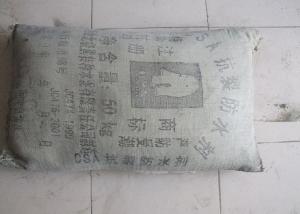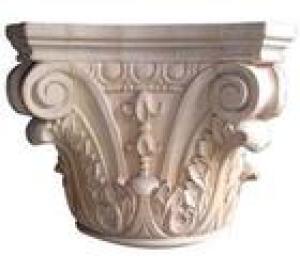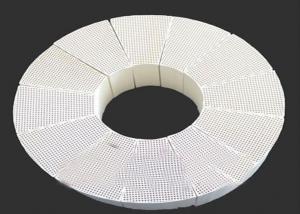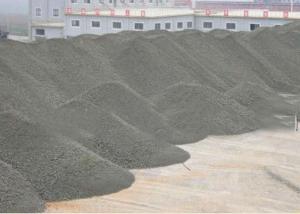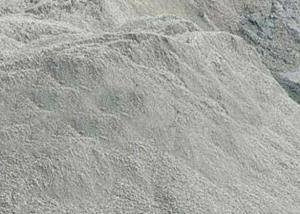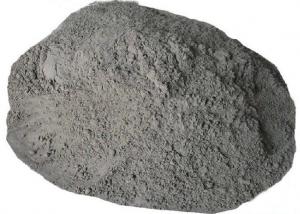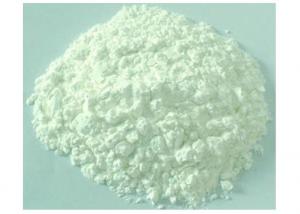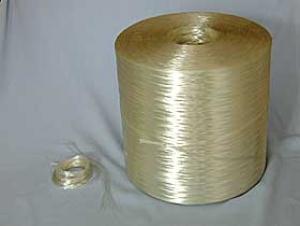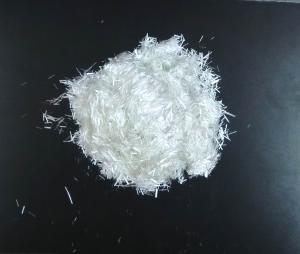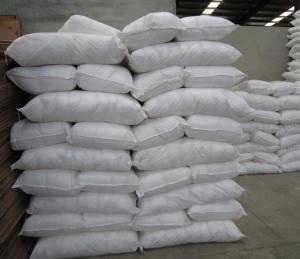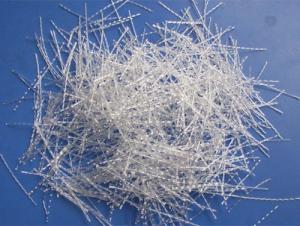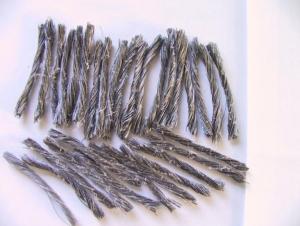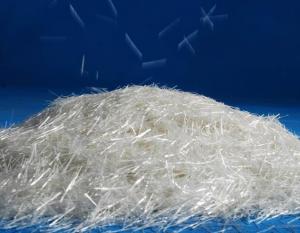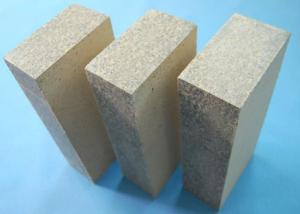Rapid-Hardening Sulphoaluminate Cement 42.5
- Loading Port:
- China Main Port
- Payment Terms:
- TT or LC
- Min Order Qty:
- 1 Tonne m.t.
- Supply Capability:
- 1000 Tonnes Per Month m.t./month
OKorder Service Pledge
OKorder Financial Service
You Might Also Like
Rapid-hardening cement 42.5 grade.
It is a kind of high early strength cement.
The product obtained by grinding cement clinker obtained by roasting suitable raw material, consisting essentially of anhydrous calcium sulphoaluminate and dicalcium silicate. Suitable gypsum and 0-10% limestone shall be blended with clinker during manufacture of rapid-hardening sulphoaluminate cement. The product is hydraulicity binding material. It has high early strength. The code no is R-SAC and with four grades.
Main Specification
1.Specific surface area(m2/kg): ≥350
2.Setting time(min):
initial setting time: ≥25
Final setting time: ≤180
(Remark: the setting time can be adjusted according to the customer’s demand.)
Strength data in different ages:
Grade | Compressive strength (Mpa) | Bending strength (Mpa) | ||||
1d | 3d | 28d | 1d | 3d | 28d | |
42.5 | 33.0 | 42.5 | 45.0 | 6.0 | 6.5 | 7.0 |
52.5 | 42.0 | 52.5 | 55.0 | 6.5 | 7.5 | 7.5 |
62.5 | 50.0 | 62.5 | 65.0 | 7.0 | 7.5 | 8.0 |
72.5 | 56.0 | 72.5 | 75.0 | 7.5 | 8.0 | 8.5 |
Properties
1) High early strength and high strength properties
Its compressive strength can reach 35-50Mpa within 1 day, 50-70Mpa after 3 days, and it also can grows continually with the increasing of curing age.
2) High froze-resistance property:
If used at the temperature as low as 0-10°C,which early strength is 5-6 times than that of OPC; if used in 0-20°C with little admixture, its strength in 3-7d can reach 70-80% of designed strength, with very little strength loss after 300 times of froze-thaw circle.
3) High impermeability: because of its dense structure, the impermeability of the concrete is 2-3 times than that of OPC in same grade.
4) Anti-carbonation property: it has good anti-carbonation property, and low dry-shrinkage.
5) Corrosion-resistance: it has good corrosion-resistance quality, especially much better in seawater corrosion resistance than that of high anti-sulphate Portland cement, with more than 1 corrosion-resistance coefficient.
Applications
1. Construction in winter.
2. Urgent repairs and rapid construction.
3. Spraying anchor and supporting engineering.
4. Water conservancy facilities and offshore projects.
5. Bridge and road construction.
6. Cement products and prefabricated components.
7. Industrial and civil engineering.
Package and storage:
bulk and weave package with membrane, 50kg per bag, conservation in cool and dry place, prevent wet.
- Q:or can i just start laying it directly on top of the cement floor?
- You can lay it directly on the concrete. Be sure that the concrete is flat-no peaks or valleys. That will allow the tile to sit securely and not crack. Hope this helps.
- Q:If yes, which are the characteristics?Where I can find information about it?How can I measure it?
- Well, it probably depends on precisely what the floor is made of and what you do to the floor after it is installed, and precisely what you mean by antistatic. Antistatic (dissipating) floors have a finite resistance that conducts static charges to ground. Cement generally retains moisture and can be fairly conductive. Adding a substance like carbon may improve the conductivity of the floor. You may be able to measure this property with a megohm meter. Look one up. When you have a conductive floor, attention must be paid to grounding it. If you coat the floor with a polymer or wax it might become nonconductive, and the polymer may generate static when walked on.
- Q:i want to put some cement in my backyard for a basketball court, is it really expensive, and about how much is it per ft.?
- It really depends on the depth of the cement. If you have want it just to play basketball the 3 inches would be perfect, howver if there are harsh weather conditions where you live then you might want to make it 4 inches. It can be expensive depending on if you are going to do it yourself or if you are going to pay some one to do it. ALso if you are going to order the cement from the company or if you are going to mix it yourself. If you pay someone it will cost you about $1500 (3 inches high for 6 yards( price may vary according to your state), it might be as high as $3000 (4 inches in depth (from dirt-surface of cement)). If you do it yourself but you order the mix from a company-->>$600-800 -- about $120 per yard(plus the labor (if you do it yourself you will still need at least 2 more people to help you since 6 yards is a lot.) If you buy the concrete mix bags from home depot you would need about 60-80 bags they are about $5 each. Then also if you intend to do it yourself you would need a lot of tools and buying them would be worse than paying someone to do it. If I were you I would just pay someone to do it 3 inches in depth. If you intend to put cars It must be at least 6 inches deep.
- Q:asbestos cement pipe laying procedure?
- AWWA Products Work Practices for Asbestos–Cement Pipe Following the work practices demonstrated in this practical handbook when installing or maintaining asbestos–cement pipe can help limit the release of airborne asbestos fibers—a critical concern. This reference summarizes the OSHA Asbestos Construction Standard and presents recommended work practices developed through experience, study, and field testing. Chapter headings cover shipping, receiving, handling, storage, and assembly; unacceptable work practices; and housekeeping and waste disposal considerations. Essential reading for engineers, managers, and crews alike. Edition: 1995, Softbound, 17 pp. ISBN 0-89867-795-5; Catalog Number 20406. Waternet? Keywords: ASBESTOS CEMENT PIPE Your Price: $ 27.00
- Q:what are the emissions?how control or reduce it?
- it wont be long that we will put so much cement down that we will throw the earth off its axes and you wont have to ask these silly q anymore anyways so why bother
- Q:My book is set in a medieval ish setting, and I need to know whether cement is an acceptable flooring for a cellar, or if stone should be used? Apparently cement has been used since the Ancient Egyptians, but I don't know if that's a good term for it. Is there an early term I could use? Or should i just use stone?
- Cement used in construction is characterized as hydraulic or non-hydraulic.It is uncertain where it was first discovered that a combination of hydrated non-hydraulic lime and a pozzolan produces a hydraulic mixture (see also: Pozzolanic reaction), but concrete made from such mixtures was first used on a large scale by Roman engineers.They used both natural pozzolans (trass or pumice) and artificial pozzolans (ground brick or pottery) in these concretes.
- Q:There is water that seeps in when it rains hard near a pipe where the city water comes in. I already tried to use quot;Great Stuffquot; around the pipe and it didn't work. Do I just put hydraulic cement in the area around the pipe area, or do I have to do the whole wall? (Can you tell I'm a new homeowner?)
- Hydraulic cement is simply any portland based cement product that hardens when mixed with water. it is not necessarily waterproof just because it has the word hydraulic in its name. You should use an expanding waterproof epoxy grout for his purpose. It is available anywhere building products are sold. Follow container instructions. Work quickly. Most of these products harden in 10 or 15 minutes. As recommended by others here, make sure first that rainwater is being directed away from your foundation.
- Q:13 inch diameter solid concrete stone - yes it will be heavy = approximately 90-95lbs.
- If you are using only Portland cement and water in the 1:4 ratio for the reaction to complete properly, you will need 80% cement by volume. Very few applications use pure Portland Cement however. V(sphere) = (4/3)(pi)(r^3) r = d/2 = 6.5in V = (4/3)(3.14)(6.5^3) = 1150in^3 1150in^3(0.80) = 920in^3 of Portland cement One sack of Portland cement (94 pounds) is approximately 1 cubic foot which is 1728in^3 920/1728 = 0.53 or about 1/2 sack or 47 pounds of Portland cement. If you are using the traditional 1 : 2 : 3 mix of cement:sand:gravel, you use 1/6 cement, or 47/6 ~ 8 pounds. At 80% due to 1:4 water mix = 8(0.80) = 6.4 pounds. At 133 lbs/ft^3 or 0.077 lb/in^3, 1150in^3 weighs: 1150(0.077) ~ 89 lbs Your answer is then either 47 pounds of pure Portland Cement or 6.4 pounds as part of a 1:2:3 dry mix combined with water at a rate of 1:4 (the latter is the practical answer). 6.4/94 ~ 1/15 sack. Remember that these figures are based on general rules of thumb and do not take into account any particular service requirement. - .--
- Q:BP is currently pumping great quantities of mud into the rupture in the Gulf and plan to dump cement in when the flow permits. Cement has to dry to be effective? So how does it dry under water and the pressures it will encounter at that depth.
- it doesn't dry; it sets - it's a chemical reaction; not simply evaporating its water content. Setting time depends on the exact chemical mix of the cement - unsurprisingly, fast-drying cement sets very quickly but is usually comparatively brittle, while slower formulations take longer but tend to be stronger. Considerable heat is given off during the setting process and the cement tends to expand, particularly if too much is added at once so that the heat in the middle can't dissipate quickly enough - this is another reason why slow-setting is preferred in many situations. Setting is also speeded up by spraying with water which not only aids the chemical reaction but also helps in cooling. Under the sea the water would actually assist in the setting process. The main problem is that it will be subjected to the pressure of the escaping oil while setting which will reduce its strength - this is probably why they're also pumping mud into the hole - this will partially clog up the hole and reduce the pressure and so give the cement a better chance of working.
- Q:I was putting together a process book for one of my classes and was gluing some work, using rubber cement, to paper and slipping it in plastic sleeves. A little while later I noticed that a lot of the plastic sleeves where warped where the rubber cement was. The plastic sleeves and rubber cement never made contact but it was warped where it was on the back of the paper. Does this normally happen? And if it does, is there a certain amount of time I should wait until I put the slips of paper into the plastic sleeves so it doesn't warp?
- The answer is YES, it will warp plastic.
1. Manufacturer Overview |
|
|---|---|
| Location | Hebei,China (Mainland) |
| Year Established | 1998 |
| Annual Output Value | US$2.5 Million - US$5 Million |
| Main Markets | North America; South America; Eastern Europe; Southeast Asia; Africa; Mid East; Eastern Asia; Western Europe; Southern Europe; South Asia |
| Company Certifications | ISO 9001:2000;ISO 14001:2004 |
2. Manufacturer Certificates |
|
|---|---|
| a) Certification Name | |
| Range | |
| Reference | |
| Validity Period | |
3. Manufacturer Capability |
|
|---|---|
| a)Trade Capacity | |
| Nearest Port | Xingang, Jingtang |
| Export Percentage | 21% - 30% |
| No.of Employees in Trade Department | 11-20 People |
| Language Spoken: | English, Chinese, Japanese, Russian, Korean |
| b)Factory Information | |
| Factory Size: | 1,000-3,000 square meters |
| No. of Production Lines | |
| Contract Manufacturing | OEM Service Offered Buyer Label Offered |
| Product Price Range | Average |
Send your message to us
Rapid-Hardening Sulphoaluminate Cement 42.5
- Loading Port:
- China Main Port
- Payment Terms:
- TT or LC
- Min Order Qty:
- 1 Tonne m.t.
- Supply Capability:
- 1000 Tonnes Per Month m.t./month
OKorder Service Pledge
OKorder Financial Service
Similar products
New products
Hot products
Related keywords
